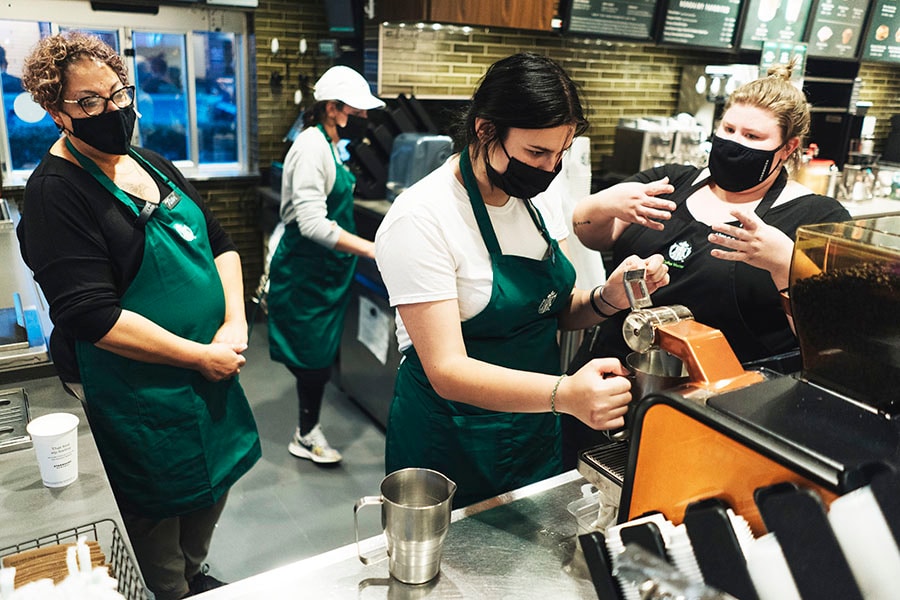
Starbucks to shift strategy to automation and expansion
Still, the coffee giant, which has been facing a wave of unionization efforts inside stores across the United States, was light on specifics around some of the concerns that have been raised by its employees, like scheduling
 Starbucks baristas in training at a location in Cheektowaga, N.Y., Oct. 13, 2021. The coffee giant intends to increase automation at its stores and open thousands of additional locations in China over the next three years. (Libby March/The New York Times)
Starbucks baristas in training at a location in Cheektowaga, N.Y., Oct. 13, 2021. The coffee giant intends to increase automation at its stores and open thousands of additional locations in China over the next three years. (Libby March/The New York Times)
Starbucks provided a window into its much-anticipated “reinvention” strategy Tuesday, highlighting automations it plans to begin using over the next three years that will get food and drink orders to customers faster while cutting down on the work done by employees. It also pointed to high-growth markets like China, where it intends to open thousands of additional stores.
Still, the coffee giant, which has been facing a wave of unionization efforts inside stores across the United States, was light on specifics around some of the concerns that have been raised by its employees, like scheduling.
While Starbucks is largely viewed as a “winner” of the pandemic, having successfully moved customers away from in-store experiences to drive-through and mobile orders, Howard Schultz, the company’s interim CEO, said the company had also made strategic mistakes. Schultz, who replaced Kevin Johnson as CEO five months ago, said that, in certain ways, the company had “lost its way.”
In a meeting that ran much of the day, Schultz and other members of the Starbucks leadership team — many of whom have been installed since he took over this spring, including the newly named CEO, Laxman Narasimhan, who will take over in April — gave a look into how they planned to push revenues and profits even higher in the next three years.
In recent months, Starbucks has seen a massive surge in revenues from younger customers ordering elaborate, cold, customized coffees, like venti caramel crunch frappuccinos. These cold drinks now make up 70% of Starbucks’ revenues. So-called modifiers of these drinks — think, a shot of espresso or three pumps of pumpkin sauce — now account for more than $1 billion in sales each year on their own.
©2019 New York Times News Service







